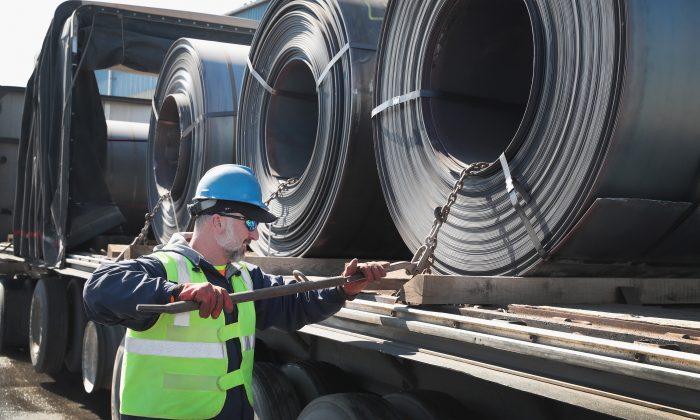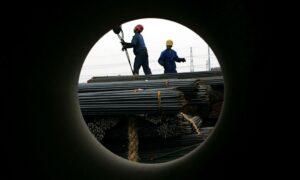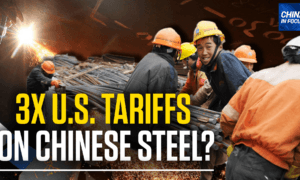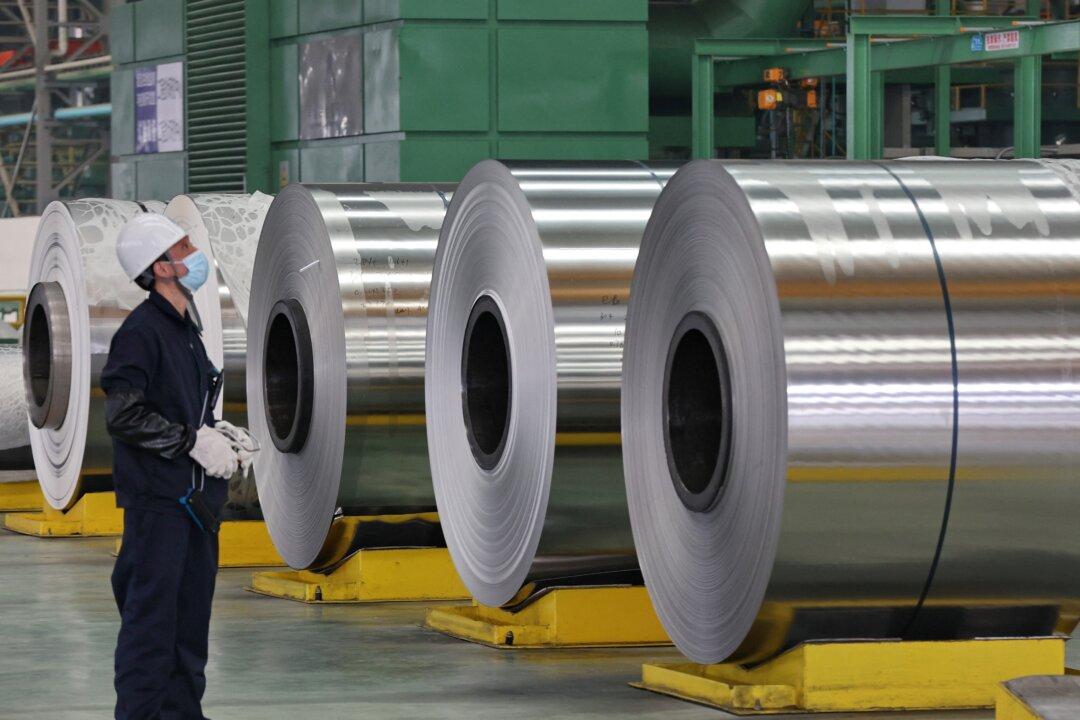China’s steel industry, which has grown at an unprecedented rate, with production increasing more than sevenfold over the past two decades, is now facing significant overcapacity challenges.
This overcapacity has led to a glut of cheap steel flooding global markets, severely impacting steel industries in the United States and Latin American countries. Concerns are mounting in these countries over the loss of thousands of jobs and the long-term sustainability of their steel sectors, prompting urgent calls for protective measures and policy interventions.
Overcapacity Crisis
China remains the world’s leading steel producer, producing 1.019 billion metric tons in 2023, or about 55 percent of global output.With government support, China’s steel industry has grown tremendously over the past two decades, with its crude steel production increasing 735 percent.
This overcapacity, combined with the practice of dumping steel abroad has led to global price declines and significant job losses worldwide.
As China’s real estate market collapses and infrastructure needs slow, domestic steel demand has plummeted. This has led to Chinese steel being sold abroad at lower prices to dispose of excess production.
In the first three months of this year, the production volume of steel companies monitored by the China Iron and Steel Industry Association was about 201 million tons, roughly the same as last year. According to data service provider My Steel Network, as of March 28, the combined inventory of China’s domestic steel mills and social stock reached 23.412 million tons, up by 75 percent from 13.382 million tons at the end of 2023. This indicates that the supply side has remained largely unchanged, while China’s domestic demand has decreased sharply.
In the first three months of this year, China’s crude steel production reached about 88 million metric tons, down from 96 million metric tons last March.
China’s apparent domestic steel consumption—reflecting the amount of steel actually consumed domestically—fell 13.1 percent in March to 77.93 million metric tons, according to calculations by S&P Global Commodity Insights. Apparent domestic steel consumption in the first quarter of 2024 fell 6.3 percent.
China’s steel industry is now facing a crisis, with the sector posting a loss of about $2 billion in the first two months of this year alone. The steel sector was the worst performer among China’s industries in 2023, according to Wang Jianhua, chief analyst for market intelligence service Mysteel.com.
Last year, several major steel companies reported significant losses, turning profitable operations into losing ones.
In particular, Anshan Steel reported a drastic shift from a profit to a net loss of 3.257 billion yuan (about $450 million). Similarly, Chongqing Steel posted a loss of 1.494 billion yuan (about $210 million), an increase of 47 percent from the previous year. Maanshan Steel and Shandong Iron & Steel also saw sharp declines, with losses of 1.33 billion yuan(about $180 million) and 400 million yuan (about $60 million) respectively, a significant reversal from previous profits.
Due to concerns about market disruption caused by low prices, calls have emerged within China for steel companies to take action.
Biden Proposes Tripled Tariffs
In a significant policy move aimed at protecting the U.S. steel industry, U.S. President Joe Biden has proposed tripling tariffs on steel and aluminum imports from China. Addressing the United Steelworkers union in Pittsburgh on April 17, Mr. Biden called on U.S. Trade Representative Katherine Tai to consider raising the current average tariff rate from 7.5 percent to 25 percent.The White House issued a statement emphasizing the importance of the steel industry to the American economy: “President Biden knows that steel is the backbone of the American economy, and a bedrock of our national security. American steel fueled the country’s industrialization and helped build the middle class. American-made steel remains critical for our economic and national security.”
Mr. Biden’s call for higher tariffs is a strategic move aimed at countering what he describes as “cheating” by Chinese companies that benefit from substantial government subsidies. This situation, he argued, has led to unfairly low prices that harm the competitiveness of U.S. producers. The president highlighted thousands of steel jobs lost in states like Pennsylvania and Ohio between 2000 and 2010 as a result of these practices.
Impact Felt in Latin America
Approximately 1.4 million people are employed in the steel industry in Latin America. However, the competitive pricing of Chinese steel, which is up to 40 percent cheaper than domestic products, has severely affected local steel mills.For example, Chile’s largest steel mill, Huachipato, has ceased operations, affecting approximately 2,700 direct jobs and 20,000 indirect jobs. Since 2009, the mill has accumulated losses of more than $1 billion.
In a desperate move, Huachipato has asked Chile’s National Commission on Price Distortion (CNDP) to recommend that the government impose a 25 percent tariff on imported steel. The CNDP recently ruled that there was sufficient evidence of dumping by China, and recommended a 15 percent tariff instead. However, this poses a challenge as Chile signed a free trade agreement with China in 2005, and imposing tariffs could lead to punitive measures.
Metal workers across Latin America, including those in major steel-producing countries such as Chile and Brazil, are urging their governments to impose higher import tariffs to protect local jobs. According to data from the Latin American Steel Association (Alacero), the region imported a record 10 million tons of steel from China in 2023, up 44 percent from the previous year and sharply increased from the 85,000 tons imported two decades ago.
In Brazil, steel imports from China surged by 50 percent last year, while domestic steel production dropped by 6.5 percent. Gerdau, one of Brazil’s largest steel producers, has laid off 700 workers, citing the “predatory import conditions” of Chinese steel. The Brazilian steel industry is calling for the government to raise the import tariff to 25 percent from a base that varies by product.
Mexico has taken a more aggressive stance, announcing in late December that it would impose a tariff of nearly 80 percent on certain steel products from China after local producers complained that Chinese steelmakers have hurt domestic production. This tariff applies to certain cold-rolled steel sheets exported from Vietnam, unless it can be proven that they are not of Chinese origin.






